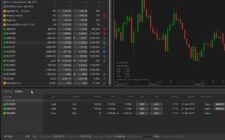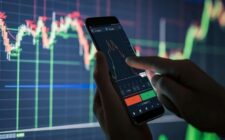TradingView is a very popular charting and analysis platform that offers a range of features to traders in various markets. Although TradingView is best known for its powerful charting features, many traders wonder whether it can be used for futures trading. Check more on demat and trading account here.
In this article, we explore the feasibility of using TradingView for futures trading and discuss the advantages and limitations of this use.
TradingView and Futures Trading:
TradingView offers an intuitive interface and advanced charting tools to help you analyze the futures markets. On the platform, traders have access to a wide range of futures contracts including commodities, currencies, indices and much more. Check more on demat and trading accounts here. Additionally, TradingView offers real-time data options so traders can stay updated with the latest price movements and indicators.
Benefits of Using TradingView for Futures Trading:
Comprehensive Charts: TradingView offers a wide range of essential technical analysis tools, indicators and drawing tools for futures traders. The platform offers customizable charts that allow traders to view multiple time frames and apply various analysis techniques.
Social and social features: TradingView has a large and active community of traders sharing ideas, strategies and information. Check more on demat and trading accounts here. This social aspect allows investors to learn from others, discuss market trends, and gain valuable insights into the futures market.
Backtesting and Strategy Development: As mentioned in the previous article, TradingView also offers a powerful backtesting feature that allows traders to test their futures trading strategies against historical data. Check more on demat and trading accounts here. This can be a valuable tool for futures traders looking to refine and review their trading strategies.
Seamless Integration with Broker
TradingView integrates with several popular broker platforms, allowing traders to place trades directly through the TradingView interface. This integration simplifies the trading process and offers futures traders a seamless experience. Check more on demat and trading accounts here.
Limitations of Using TradingView for Futures Trading:
Speed of Trade Execution: While TradingView allows direct integration with brokers, please note that the speed of trade execution may depend on the broker’s infrastructure. Investors should consider the latency and reliability of their chosen broker when executing futures trades via TradingView.
Advanced Order Types: TradingView may not support all advanced order types offered by some futures brokers. Traders who rely heavily on complex order types such as conditional orders or range orders may need to use their broker’s trading platform directly.
Market Depth: TradingView does not provide complete market depth information for the futures markets. This can be a limitation for traders who require detailed order book data to assess market liquidity and make informed trading decisions. Check more on demat and trading accounts here.
Wrapping up
Although TradingView is best known for its charting and analysis features, it can be a valuable tool for futures traders. With comprehensive charting features, an active community, backtesting capabilities, and seamless broker integration, TradingView offers significant advantages for traders looking to analyze and execute futures trades. However, it is important to consider limitations such as execution speed, advanced order types, and market depth before relying solely on TradingView for futures trading. Check more on demat and trading accounts here.




